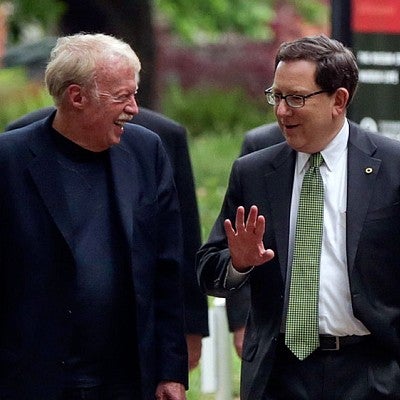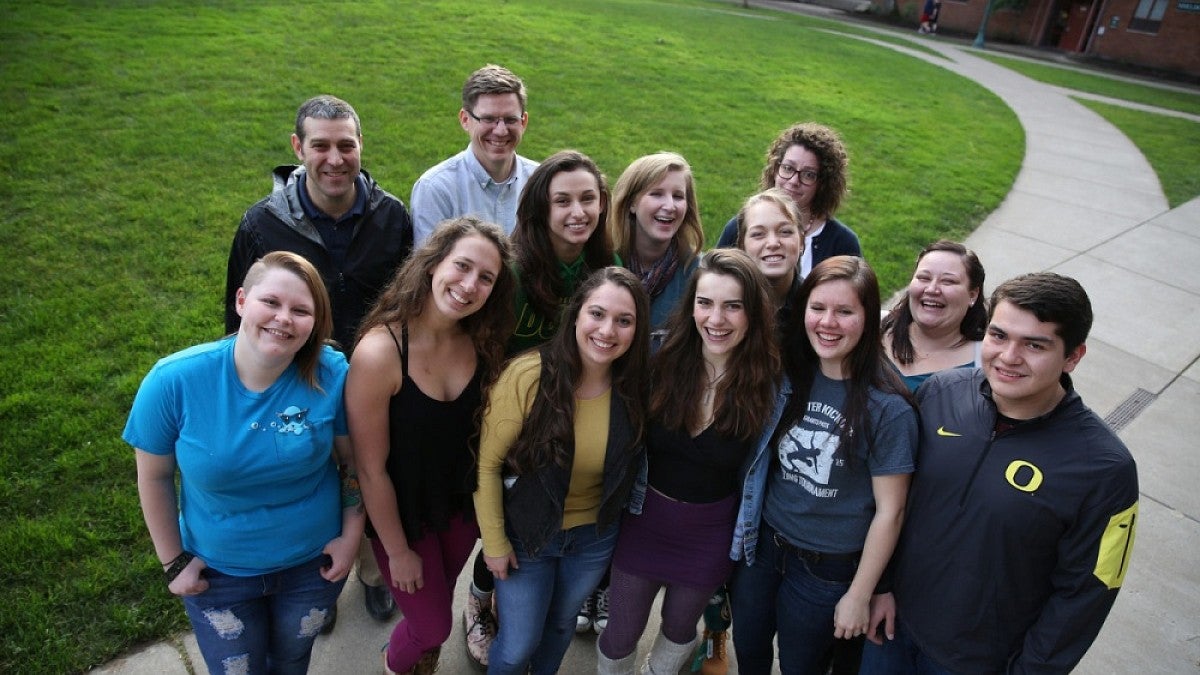Powered by a historic $500 million gift from Phil and Penny Knight that launched a new science campus, the University of Oregon amassed a record-breaking $695 million in donations for the 2017 fiscal year, propelling its campaign past $1.7 billion toward a $2 billion goal.

The $695 million far eclipsed the campaign’s previous best year of $215 million. It was the third straight year and fourth out of five in which the university’s fundraising exceeded the $200 million annual marker.
“The unprecedented generosity of our incredible donors demonstrates their love for the university,” said President Michael H. Schill. “They believe in the ambitious vision we have set for the UO — to be one of the nation’s highest regarded public research universities, emphasizing innovative academic excellence, access and success for students, and an enriching experience. They have spoken with substantial, unflagging and generous giving.”
In all, 40,551 donors gave nearly 50,000 donations to fund student and faculty support, capital improvements, student activities and athletics. The year’s notable gifts and projects touched nearly every aspect of campus:
- A $2 million gift from Julie and Keith Thomson, matched with $1 million from Intel, will endow the director position at the College of Education’s HEDCO Clinic, enabling the educational and social services facility to reach more Oregon families and create new student opportunities.
- The DeArmond family’s legacy continued with a multimillion-dollar gift to increase established scholarships in the School of Music and Dance, the Charles H. Lundquist College of Business, PathwayOregon and the Department of Intercollegiate Athletics. The family’s most recent gift also supported a faculty chair in the Lundquist College.
- Plans for a new Black Cultural Center were launched with $1.6 million in widespread community support, including a lead gift from Nancy and Dave Petrone and more than 100 individual donations spurred by a $10,000 challenge gift from the Black Alumni Network of the University of Oregon Alumni Association.
- An anonymous gift of nearly $2.25 million will create a new endowed fund for Contemporary Art at the UO’s Jordan Schnitzer Museum of Art.
- A gift by Sharon and Lloyd Powell will support activities of the UO’s Center for Genome Function, including assistance for labs, equipment and graduate students.
- Gifts large and small contributed to the success of “Ducks Give” on May 18, which raised $1.1 million in a single day for causes across campus.
- Following the lead gift from Willie and Don Tykeson, other donations poured in edging the College of Arts and Sciences closer to the $17 million that triggers a state match for Tykeson Hall, a new college and careers building in the heart of campus.
The UO’s funding campaign continues to be the most ambitious in the state’s history. The $1.7 billion to date doubles the total achieved during the UO’s last campaign, which concluded in 2009, and climbed to more than 85 percent of the university’s goal in just the third public year of the campaign.
To date, 74 percent of giving has been designated for academics and 26 percent for intercollegiate athletics. The university’s endowment reached $822 million as of June 30.
Mike Andreasen, vice president for advancement, lauded the generosity of the school’s donors and management of the UO Foundation.
“I marvel at the incredible momentum gained in this year of the campaign,” Andreasen said. “It’s a tremendous show of faith, trust and commitment by those who believe in the value and power not just of higher education, but of the University of Oregon.”
“I am incredibly grateful to all of those who continue to contribute to our mission,” Schill said, “and help fulfill the ambitions and aspirations of our students, faculty and staff members, researchers, and the greater UO community. Together we are achieving significant impact and benefit for our state and world.”


